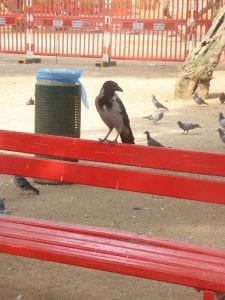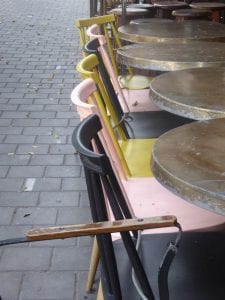
Naomi’s Photos
Recent research at the Puffin Institute of Classroom Experience has illuminated the striking connection between using educational technology in the classroom and crushing garlic, particularly crushing garlic with a fork. Due to the fact that many teachers moonlight as family cooks, the following information may be of particular interest.
Here are the main findings of the research:
A divisive flavor!
Either you hate it or you love it… Feelings run strong!
There is no denying that generous use of garlic has a strong presence in a dish – whether it enhances it or makes you push the dish away is the debatable part. Obviously, use of EdTech in the classroom, whether it is via computers, cell phones or tablets can’t be missed either. The question is whether eyes are rolled at the thought of introducing it into the classroom while tongues are clucked in disapproval at the “waste of time”, or is the technology embraced as means to interactive learning?
It can be sorely tempting to use the frozen version!
“Finely dice the garlic!” “Only add the diced garlic when the onion has become translucent, otherwise the garlic will become bitter!” “it’s better to crush the four cloves of garlic!”
While there is no doubt that FRESH is best, frozen garlic cubes, (which only need to be tossed into the pot) can seem quite tempting indeed!
“Fresh” in EdTech means using technological tools that allow teachers to pour in content tailored to their own students’ needs, such as choosing the vocabulary or creating the questions. Remember the old adage “A stitch in time saves nine?” Well, one link (to a ready-made activity) may save time, say nine glorious minutes, or cost nineteen minutes in explaining what goblins are or “zero conditionals”, or get you mired in trying to explain why what happened to a mythical John in Ibiza might be a secret…

Naomi’s Photos
There are Time-Saving Tricks – Sigh…
Try peeling the cloves of garlic, leave them whole and toss them into the pot with the onion. Now all you have to do is fish them out and smash them with a fork before adding all the other ingredients to the pot. No dicing or special garlic-crushers needed – all time issues resolved, right?
Well…
It really is a time-saving tip, as long as you don’t dice the cloves out of habit before you remember not to. In addition, if you fish the cloves out of the pot too early they tend to fly off the chopping board when you try to crush them with a fork…
Thankfully computers don’t usually “fly” in the classroom. However, colleagues and counselors, so eager to impart time-saving tips which prove that using EdTech won’t take the teacher more time, sometimes forget that it takes time to learn how to save time. Time, practice and patience are called for…
Reducing Blood pressure \ Improving Brain Functions
In these matters, Edtech and garlic only have a partial match. While it is clear that learning to use new educational tools (or learning anything for that matter), certainly improves brain functions, the issue of reducing blood pressure could not be established. There are schools in which using EdTech entails running after the person in charge of the computer room or dealing with old equipment that can crash…

Naomi’s Photos
Acquired Tastes!
There is hope!
The Puffin Institute of Classroom Experience has been collecting accumulating evidence proving that there are garlic-haters who have learned to like garlic in their food and teachers who have learned to overcome their distrust of EdTech.
Patience is the key!





